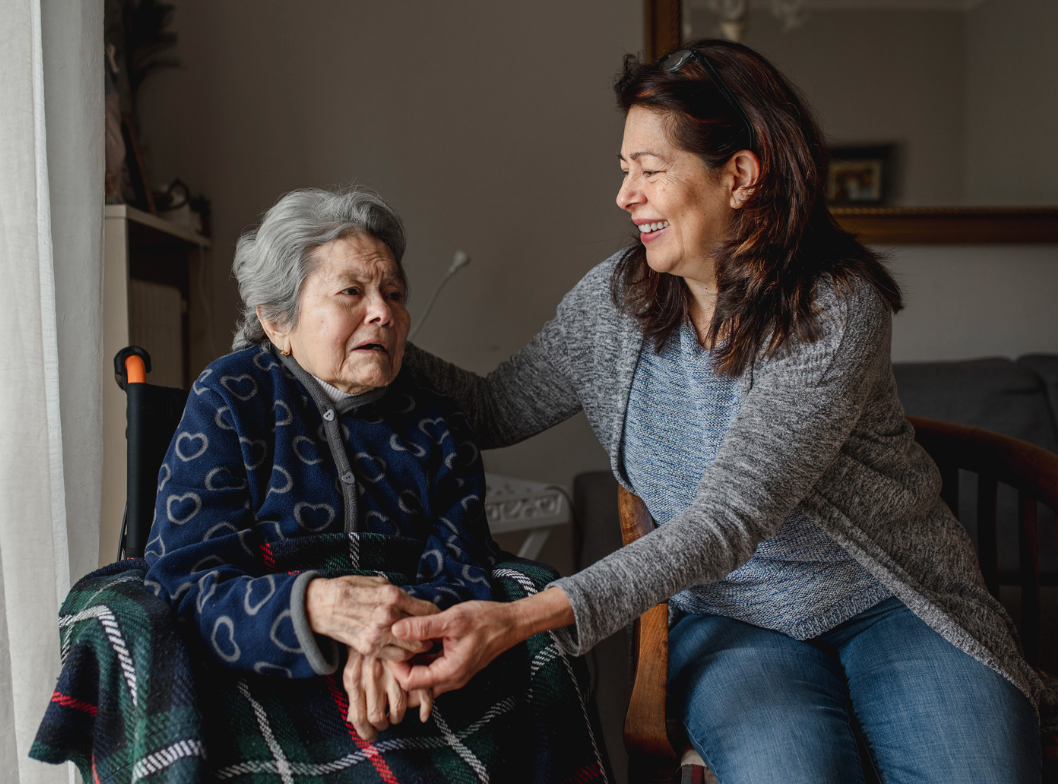Sundowning: Managing the Signs and Symptoms
Sundowning: Managing the Signs and Symptoms
Sundowning is a phenomenon commonly seen in people with dementia or Alzheimer's disease, characterized by increased confusion, anxiety, and agitation during the late afternoon or evening hours. Managing the signs and symptoms of sundowning can be challenging, but there are strategies that caregivers and family members can use to help alleviate these symptoms:
- Maintain a Routine: Keeping a regular schedule for daily activities such as waking, meals, and bedtime can help reduce confusion and promote better sleep.
- Light Exposure: Exposure to natural light during the day can help regulate the body's sleep-wake cycle. In the evening, reducing exposure to bright lights and stimulating activities can help ease the transition to nighttime.
- Create a Calming Environment: Reducing noise, clutter, and the number of people in the room can help create a more relaxing environment. Soft music, calm voices, and a quiet setting can also be soothing.
- Monitor Diet: Avoid caffeine and sugar late in the day as they can exacerbate agitation and interfere with sleep. A light snack before bed can help prevent hunger during the night, which can also be a source of discomfort.
- Encourage Physical Activity: Regular physical activity during the day can help reduce restlessness in the evening. Activities should be appropriate to the individual's health and mobility levels.
- Use Reassuring Communication: Speak calmly, clearly, and reassuringly. Avoid arguing or trying to reason with a person who is sundowning as it can increase stress and confusion.
- Consult Healthcare Providers: Sometimes, medication adjustments or treatments may be needed. Consulting with a healthcare provider can provide specific guidance tailored to the individual's health needs.
- Safety Precautions: To prevent wandering or accidents during periods of confusion, ensure the home is safe and secure. This might include locks that require a key, alarms on doors, and ensuring the person carries identification if they do wander.
Each person with dementia is different, so it may take some trial and error to find what works best in managing sundowning symptoms. The support of a healthcare professional who specializes in dementia can be invaluable in this process.
Sundowning and Dementia:
Effective Strategies to Manage Signs and Symptoms
Dealing with dementia is challenging, not just for the affected individuals but also for their caregivers. One of the more perplexing aspects of dementia is "sundowning," a symptom complex occurring in the late afternoon and stretching into the night, characterized by increased confusion, agitation, and anxiety. Understanding and managing sundowning is crucial for improving the quality of life for both people with dementia and those who care for them. This blog delves into the nature of sundowning and offers practical advice for managing its signs and symptoms.
Understanding Sundowning
Sundowning, also known as late-day confusion, affects people with Alzheimer’s disease and other forms of dementia. This phenomenon usually peaks during the evening or during the night. Symptoms may include increased confusion, anxiety, agitation, pacing, disorientation, and even aggressive behaviors. The exact cause of sundowning isn't known, but it is believed to be associated with the disruption of the circadian rhythm—the body's internal clock that signals sleep and wake cycles.
Tips for Managing Sundowning
Managing sundowning effectively can greatly alleviate its impact. Here are several strategies that caregivers can employ
- Maintain a Consistent Routine: Regular routines can help stabilize the circadian rhythms, thus reducing confusion and anxiety. Try to schedule daily activities at the same time each day, particularly waking, meals, and bedtime.
- Optimize Light Exposure: Exposure to sunlight during the morning can help regulate the body’s internal clock. As evening approaches, reducing exposure to bright and artificial lights can help diminish symptoms of sundowning.
- Create a Peaceful Environment: Evening hours should be calm and quiet to prevent overstimulation. Use soft lighting, play gentle music if it seems to soothe the person, and keep the environment peaceful.
- Monitor Diet and Fluid Intake: Avoid stimulants such as caffeine and sugar in the late afternoon and evening. Ensure that the person with dementia stays hydrated throughout the day but consider limiting fluid intake before bedtime to reduce nighttime awakenings.
- Encourage Physical and Social Activities: Activities that engage and tire out the individual can help reduce restlessness in the evening. Tailor activities to the person’s abilities and interests, and involve them in simple household chores to provide a sense of purpose.
- Communicate Effectively: Always communicate in a calm, reassuring manner. Clear, simple sentences and a soothing tone can help ease anxiety and confusion.
- Adjust Sleeping Arrangements: Ensure the sleeping environment is comfortable. Use nightlights and safety devices if necessary to prevent falls or wandering.
- Professional Consultation: Consult healthcare providers about managing sundowning symptoms effectively. Sometimes, medication may be required to manage agitation or sleep disturbances.
- Safety Measures: Safety is paramount. Use locks for doors and windows, and consider motion sensors or alarms to alert you if the person attempts to wander.
When to Seek Help
While these strategies can be implemented at home, there are times when professional help may be necessary. If you observe a significant increase in behavioral symptoms or if the strategies you implement do not seem effective, consulting with a dementia care specialist or a neurologist might be necessary.
For comprehensive support and expert advice, check out our senior care services.
Sundowning is a distressing symptom of dementia, but with the right strategies, its impact can be managed effectively. A structured daily routine, tailored activities, and a calm environment are key components in reducing the challenges associated with sundowning. Remember, each person with dementia is unique, and patience and flexibility are crucial as you work to find the most effective approach. For caregivers, self-care is also vital; ensure you seek support and respite when needed, as caring for someone with dementia is a demanding task that cannot be done alone.
By fostering a deeper understanding of sundowning and implementing these practical management strategies, caregivers can provide better care and improve the quality of life for those experiencing this challenging aspect of dementia.
While the information provided in this blog is intended to be informative and helpful, it's important to consult with a qualified professional for personalized advice. If you have any concerns or questions about your health or specific medical conditions, don't hesitate to reach out to your physician or another trusted healthcare provider. Your health is important, and seeking professional guidance ensures you receive the best care tailored to your individual needs.














